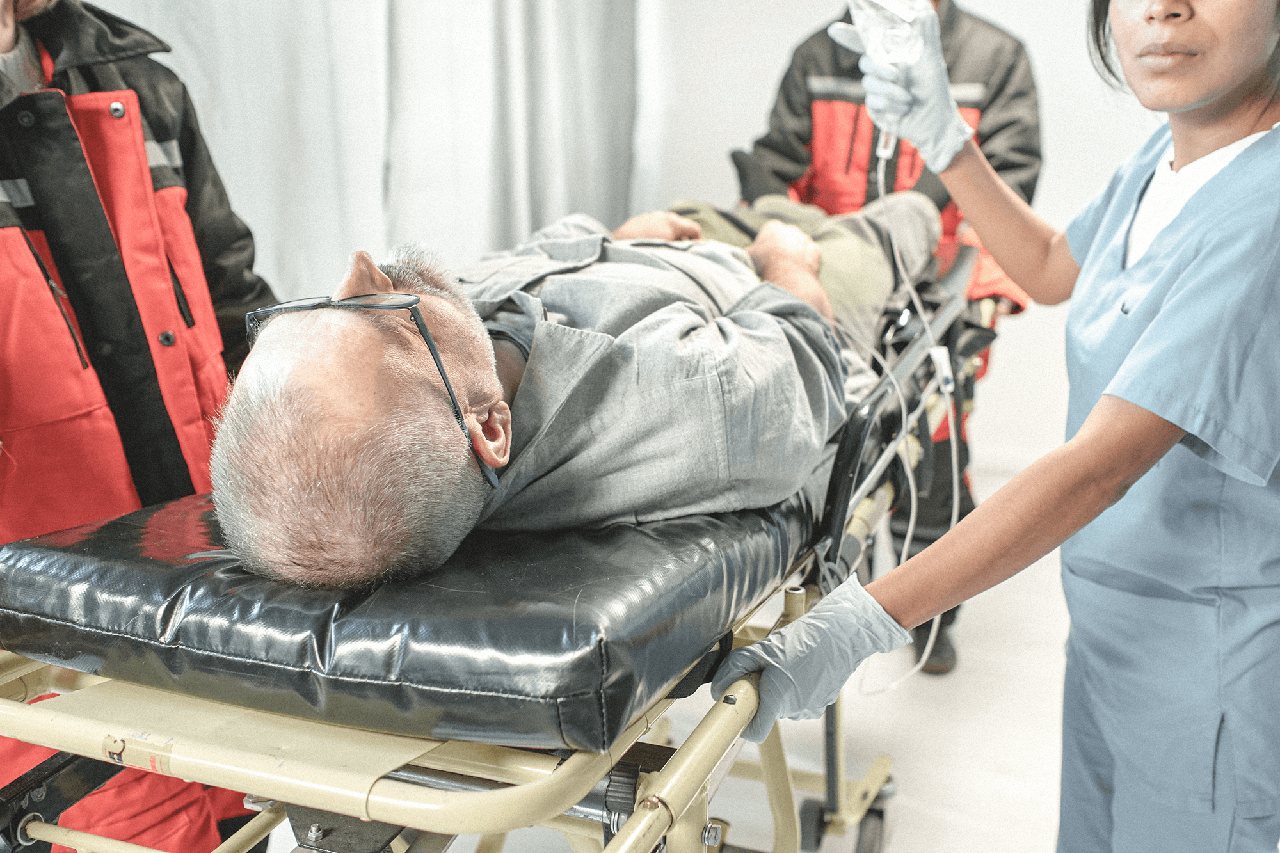Let’s dive into the topic of shock. Shock, by definition, is one of the worst states the body can be in. Why? Because our cells need blood, perfusion, and nutrients like oxygen to survive. In a state of shock, we experience hypoperfusion, meaning the body isn’t getting enough oxygen to the cells.
To break it down, shock is inadequate cellular perfusion, leading to cells starving for oxygen, blood, and nutrients. This process is called hypoperfusion.
There are three main components necessary for adequate perfusion:
- The Heart as a Pump: The heart’s primary function is to pump blood around the body, delivering nutrients and oxygen. If the heart isn’t working properly due to heart failure or a heart attack, we risk going into shock.
- The Blood Vessels as Containers: Blood vessels act as containers for our blood. If they are abnormally dilated, like in some types of shock, blood pressure drops, and perfusion suffers.
- The Blood Itself: We need enough blood volume in our body, and it needs to be oxygen-rich. Conditions like bleeding out or severe dehydration can lead to hypovolemic shock.
Understanding these three factors helps us determine if someone is experiencing hypoperfusion.
Types of Shock
Cardiogenic Shock
This is pump failure. It can be caused by acute events like a heart attack (myocardial infarction) or chronic conditions like congestive heart failure (CHF). Symptoms include pulmonary edema, poor gas exchange, and decreased cardiac output.
Obstructive Shock
This occurs when an event obstructs circulation. The three main causes are:
- Cardiac Tamponade: Fluid accumulation around the heart restricts its ability to pump effectively.
- Tension Pneumothorax: Air trapped around a collapsed lung affects circulation.
- Pulmonary Embolism: A blockage in the pulmonary artery obstructs blood flow.
Distributive Shock
This type has four subtypes and is characterized by abnormal vasodilation:
- Septic Shock: Caused by widespread infection, leading to abnormal vasodilation and poor perfusion.
- Anaphylactic Shock: A severe allergic reaction affecting multiple body systems.
- Psychogenic Shock: Often related to emotional events, causing temporary vasodilation and fainting.
- Neurogenic Shock: Resulting from severe spinal cord trauma, leading to vasodilation.
Hypovolemic Shock
This classic type involves significant blood loss or severe dehydration, leading to low blood volume and poor perfusion.
Stages of Shock
There are three stages of shock:
- Compensated Shock: The body attempts to compensate for the initial problem. Symptoms include increased respiration and heart rate, agitation, and altered mental status.
- Decompensated Shock: The body’s mechanisms start to fail, leading to hypotension and unresponsiveness.
- Irreversible Shock: At this stage, recovery is unlikely, and the patient may be near cardiac arrest.

EMS Treatment of Shock
Treating shock depends on the type:
- Cardiogenic Shock: Address the underlying heart issue, such as a heart attack.
- Anaphylactic Shock: Administer epinephrine.
- Septic Shock: Treat the infection and manage vasodilation.
Early recognition and targeted treatment are crucial in managing shock effectively. Always remember to identify the type of shock, understand its cause, and implement the appropriate EMS treatment plan to improve patient outcomes. Here are some examples for treating each type of shock you might encounter in the field.
Treating Cardiogenic Shock
- Initial Assessment: Monitor airway, breathing, and circulation (ABCs). Check for signs of heart failure, such as chest pain, shortness of breath, and crackles in the lungs.
- Oxygen Therapy: Administer high-flow oxygen to ensure adequate oxygenation.
- Positioning: Position the patient in a semi-Fowler’s position to ease breathing.
- Medication: If prescribed and within your scope, administer nitroglycerin for chest pain unless contraindicated.
- Transport: Rapid transport to a facility with advanced cardiac care capabilities. Ensure continuous monitoring of vital signs and prepare for advanced interventions by hospital staff.
Treating Obstructive Shock
Cardiac Tamponade
- Initial Assessment: Look for signs like jugular venous distention (JVD), muffled heart sounds, and hypotension.
- Oxygen Therapy: Administer high-flow oxygen.
- Rapid Transport: Immediate transport to a facility where pericardiocentesis can be performed.
- Monitor: Continuous monitoring of vital signs and prepare for potential cardiac arrest.
Tension Pneumothorax
- Initial Assessment: Look for signs such as absent breath sounds on one side, tracheal deviation, and respiratory distress.
- Needle Decompression: If within your scope and protocols, perform needle decompression to relieve pressure.
- Oxygen Therapy: Administer high-flow oxygen.
- Transport: Rapid transport to a trauma center.
Pulmonary Embolism
- Initial Assessment: Monitor for symptoms like sudden onset shortness of breath, chest pain, and cyanosis.
- Oxygen Therapy: Administer high-flow oxygen.
- Positioning: Position the patient to maximize comfort and breathing efficiency.
- Transport: Rapid transport to an appropriate facility for advanced care.
Treating Distributive Shock
Septic Shock
- Initial Assessment: Identify signs like fever, chills, altered mental status, and rapid heart rate.
- Oxygen Therapy: Administer high-flow oxygen.
- Fluid Resuscitation: Administer IV fluids to maintain blood pressure if within your scope.
- Transport: Rapid transport to a hospital for antibiotic administration and further management.
Anaphylactic Shock
- Initial Assessment: Look for signs such as hives, wheezing, and swelling.
- Epinephrine: Administer intramuscular epinephrine immediately.
- Oxygen Therapy: Administer high-flow oxygen.
- Antihistamines and Steroids: If within your scope and protocols, administer antihistamines (e.g., diphenhydramine) and corticosteroids.
- Transport: Rapid transport to a hospital for ongoing management and observation.
Psychogenic Shock
- Initial Assessment: Evaluate for causes of syncope (fainting).
- Positioning: Lay the patient flat and elevate the legs to improve blood flow to the brain.
- Oxygen Therapy: Administer oxygen if needed.
- Monitor: Monitor vital signs and mental status. Look for any underlying conditions that might have caused the syncope.
- Transport: Transport for further evaluation, especially if an underlying medical condition is possible.
Neurogenic Shock
- Initial Assessment: Look for signs of spinal injury, such as hypotension without tachycardia and warm, dry skin below the injury level.
- Spinal Precautions: Immobilize the spine to prevent further injury.
- Oxygen Therapy: Administer high-flow oxygen.
- Fluid Resuscitation: Administer IV fluids to maintain blood pressure if within your scope.
- Transport: Rapid transport to a trauma center with spinal injury care.
Treating Hypovolemic Shock
- Initial Assessment: Look for signs of blood loss or dehydration, such as rapid heart rate, low blood pressure, and pallor.
- Control Bleeding: Apply direct pressure, tourniquets, or hemostatic agents to control external bleeding.
- Fluid Resuscitation: Administer IV fluids to maintain blood volume and pressure if within your scope.
- Oxygen Therapy: Administer high-flow oxygen.
- Transport: Rapid transport to a facility that provides advanced care and blood transfusions if necessary.
By following these treatment examples, you’ll be better prepared to manage different types of shock and provide effective prehospital care. Remember, early recognition and prompt treatment are key to improving patient outcomes.

